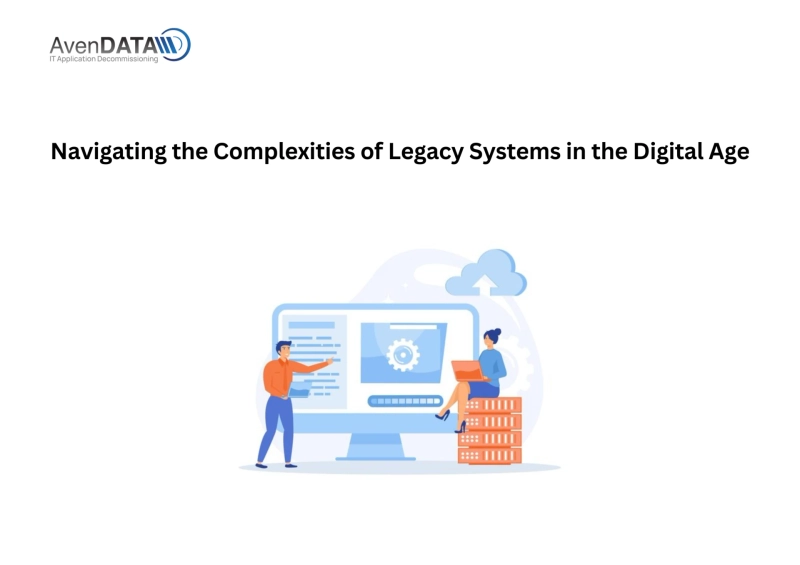Introduction: In today’s rapidly evolving digital landscape, businesses face the challenge of modernizing their technology infrastructure to keep up with the demands of the digital age. However, many organizations find themselves grappling with the complexities of legacy systems — aging IT systems that have been in place for years, sometimes even decades. In this blog, we will explore the intricacies of legacy systems in the digital age and discuss strategies for navigating their complexities to ensure a smooth transition into the future.
Understanding Legacy Systems: Before we delve into the complexities, it’s crucial to understand what IT legacy systems are. Legacy systems are outdated technology platforms, applications, or software that have been in use for a long time. These systems often rely on outdated programming languages, lack modern capabilities, and can pose compatibility issues with newer technologies.
Identifying the Challenges: Legacy systems present a range of challenges in the digital age. These challenges include:
a. Outdated Hardware and Software: Legacy systems often run on obsolete hardware and software that may no longer be supported by manufacturers or developers. This can lead to security vulnerabilities and limited compatibility with newer technologies.
b. Integration Issues: Legacy systems can struggle to integrate with modern software applications and cloud-based services, hindering data flow and collaboration across the organization.
c. Scalability and Performance Limitations: Legacy systems may not have the capacity to handle the increasing volumes of data and transactions required in today’s digital business environment, leading to performance bottlenecks.
d. Skill Set Gap: As technologies advance, the expertise required to maintain and support legacy systems becomes increasingly scarce, creating a skill set gap within IT departments.
Developing a Modernization Strategy: To navigate the complexities of legacy systems, organizations must develop a comprehensive modernization strategy. This strategy should include the following key steps:
a. Assessment and Evaluation: Conduct a thorough assessment of existing legacy systems to identify their strengths, weaknesses, and compatibility with modern technologies. Evaluate the potential impact of modernization on business processes and outcomes.
b. Prioritization and Roadmap: Prioritize legacy systems for modernization based on their criticality to business operations and potential return on investment. Develop a roadmap that outlines a phased approach to modernization, taking into account budget, resource availability, and risk management.
c. Legacy Integration: Implement integration solutions that bridge the gap between legacy systems and modern applications, enabling data exchange and process automation. This approach allows organizations to leverage the existing investments in legacy systems while gradually transitioning to modern technologies.
d. Incremental Modernization: Adopt an incremental approach to modernization, focusing on specific modules, functionalities, or processes within legacy systems. This approach minimizes disruption to business operations while progressively modernizing critical components.
Managing Risk and Security: During the modernization process, organizations must prioritize risk management and security. Legacy systems are often more susceptible to cyber threats due to outdated security measures. Implement robust security protocols, conduct regular vulnerability assessments, and consider data migration strategies that minimize the risk of data loss or corruption.
Embracing Change and Innovation: Navigating legacy system complexities requires a mindset shift within organizations. Embrace change and foster a culture of innovation to drive the modernization process. Encourage collaboration between IT and business stakeholders to ensure that modernization efforts align with strategic objectives and deliver tangible business value.
Conclusion: In the digital age, navigating the complexities of legacy systems is a critical challenge that organizations must address to stay competitive. By understanding the challenges, developing a modernization strategy, managing risks, and embracing change, businesses can successfully transition from legacy systems to a more agile, scalable, and secure technology infrastructure. Modernization not only unlocks new opportunities for innovation but also paves the way for improved business performance and future growth in the digital era.
#AvenDATA #legacysystems #ITlegacysystems #dataarchiving #legacydata


